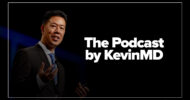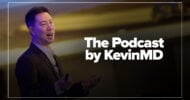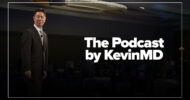 This article is sponsored by Wall Street Alliance Group, specializing in physician financial planning.
This article is sponsored by Wall Street Alliance Group, specializing in physician financial planning.
Often, physicians only give minimal attention to their financial futures, but potential federal changes could make tax planning even more important. The proposed infrastructure bill would increase taxes, affecting those with an annual income higher than $400,000, which is not uncommon for physicians. These changes make it vital for physicians to sit down with their financial advisors and CPAs now to minimize their own tax burden.
One of the primary ways to do this is by not missing any potential deductions that can still be made before the 2021 tax filing deadline.
1. Standard vs. itemized. While the IRS doubled the standard deduction to nearly $2400 last year, you may qualify for more. Talk to your CPA and review receipts for donations, interest, mortgage payments, and other itemized deductions to see if they will add up to a larger deduction than the standard one.
2. Personal income QBI. Your work-derived income qualifies for a 20 percent deduction as Qualified Business Income for self-employed physicians. This deduction applies to anyone with an income lower than $315,000.
3. Rental income claim QBI. For those who own rental property, collected rent qualifies for a 20 percent deduction on rental income.
4. Maxing contributions. Before the tax filing deadline, self-employed physicians can establish retirement plans such as SEP IRAs or cash balance plans and contribute the maximum amounts to lower taxable income. Contributing to personal IRAs and HSA accounts are also ways to maximize both retirement and tax savings.
5. Student loans. It’s a given that recent graduates will have student loan payments. You can deduct the interest up to $2,500, subject to income restrictions.
6. Real estate depreciation. Improvement costs or depreciation in rental property may potentially be written off as deductions as well.
7. Home offices. During the COVID-19 pandemic, there was a rise in the number of physicians making use of a home office for their practice. A percentage of the amount spent at home for business can be written off.
8. R&D credit. One that often applies to dentists, this credit is for research and development. It can be applied for investing in equipment or processes that enhance the patient experience. The amount of the credit may be up to $250,000.
9. Food expenses. This write-off was expanded to help local businesses during the pandemic for business-related food expenses. For 2021, 100 percent of food expenses qualify.
After claiming those deductions for 2021, there are strategies to implement now to plan for tax savings in 2022.
1. Employer-sponsored plans. Enrolling in your employer’s retirement plan for physicians working in hospitals is a good strategy. These plan types may include 401(k), 457(b), or 409A plans. Contributing the maximum amount brings the greatest tax savings, but if your hospital plan offers a contribution match, the best practice would be to at least contribute to the level where you’ll receive the full match amount.
2. Cash balance plan. Setting up a cash balance plan for self-employed physicians is a smart move to maximize savings. As this is a defined benefit plan, the contribution amounts depend on age and wage. This works well as a catch-up for those who started retirement saving a little later; for investors over age 60, the maximum contribution is about $260,000 annually.
3. State taxes paid through corporation. Estate and property taxes now have a write-off cap of $10,000. Since last year, many states have adopted legislation that allows state taxes to be paid by pass-through corporations, then allowing a write off the full amount on the corporation owner’s personal taxes. This option must be elected each year and varies by state.
4. Backdoor Roth IRAs. For those whose income level doesn’t allow them to invest in a Roth IRA, those benefits are still available by contributing post-tax money to an IRA and then converting it to a Roth IRA. This conversion has no amount limit.
5. Involve kids. For self-employed physicians, you can hire your own children to your corporation; this teaches them the value of money and, since they’ll have earned income, they will be able to open a Roth IRA. This account will grow tax-free, and after five years, distributions for qualified expenses can be tax-free, such as first-time home buyers, etc.
Besides retirement accounts, you can put other savings options into play for 2022. For some of these, changes in tax law may eliminate them in the future, so implementing them this year is a good plan.
1. Opportunity zones. For real estate investors, opportunity zones, which are state-defined areas marked for improvement, may be a good choice. If held for more than ten years, there are no capital gains on those properties.
2. Vehicle depreciation. If purchasing large vehicles for business, the owner may qualify for accelerated depreciation and be able to write off the full value of the vehicle.
3. 529 contributions. While these plans vary by state, it’s always a good idea to invest in your children’s higher education. Contributions lower taxable income while qualifying for state tax write-offs.
4. Tax loss harvesting. There is always tax owed when selling stocks. For stocks that are dipping in value, selling them at a loss means that loss can be carried forward to offset other stocks’ profit.
5. Cost segregation. Depreciation of property happens as the property gets older, and as it does, the taxes owed lessen. The regular depreciation periods are long, up to 39 years. This period can be reduced to as few as five years through a cost segregation analysis, and the tax benefits on rental income can be gained much earlier.
6. Charitable donations. Rather than donating cash, gifting appreciated stocks will have the dual benefit of the donation to the organization and tax savings/write-offs for the donor.
Physicians can set themselves up for better financial planning and a better financial future by taking advantage of tax savings and preparing for them throughout the year. To decide which combination of these options best suits your needs, speak with a financial advisor and your CPA.
Securities are offered through Securities America, Inc., member FINRA/SIPC. Advisory services offered through Securities America Advisors, Inc. Wall Street Alliance Group and Securities America are separate companies. You should continue to rely on confirmations and statements received from the custodian(s) of your assets. Securities America and its representatives do not provide tax or legal advice; therefore, it is important to coordinate with your tax or legal advisor regarding your specific situation.
Syed Nishat is a partner, Wall Street Alliance Group. He can be reached on LinkedIn and on Twitter @syedmnishat. He holds the FINRA Series 7, FINRA Series 63, and FINRA Series 66 licenses, along with licenses for life, disability, and long-term care insurance.
Did you enjoy today’s episode?
Rate and review the show so more audiences can find The Podcast by KevinMD.
Subscribe on your favorite podcast app to get notified when a new episode comes out.
Reflect and earn 1.0 AMA PRA Category 1 CME for this episode.
Also available in Category 1 CME bundles.
Powered by CMEfy – a seamless way for busy clinician learners to discover Internet Point-of-Care Learning opportunities that reward AMA PRA Category 1 Credit(s)™. Learn more at about.cmefy.com/cme-info
Do you know someone who might enjoy this episode? Share this episode with anyone who wants to hear health care stories filled with information, insight, and inspiration.
Hosted by Kevin Pho, MD, The Podcast by KevinMD shares the stories of the many who intersect with our health care system but are rarely heard from.



























![Sibling advice for surviving the medical school marathon [PODCAST]](https://kevinmd.com/wp-content/uploads/Design-1-190x100.jpg)


